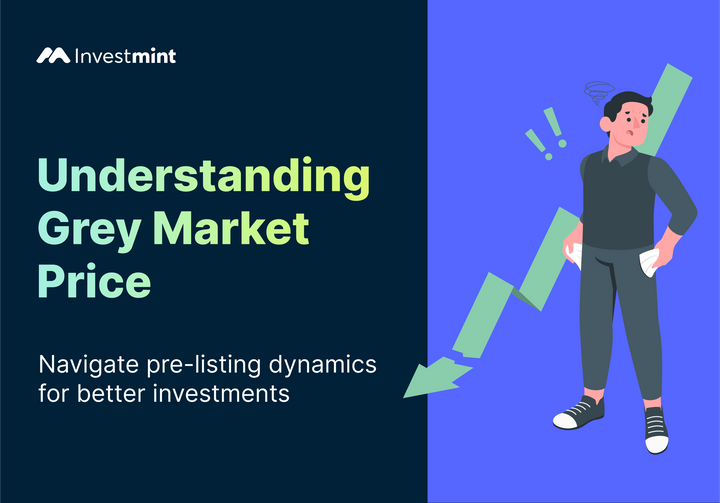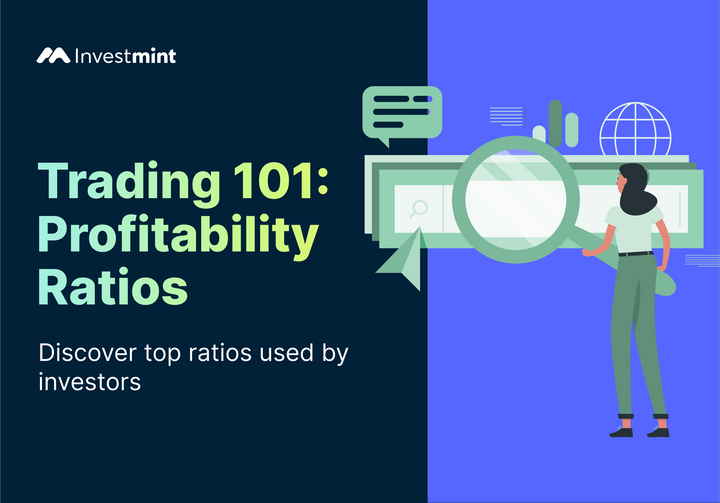VWAP: The Technical Indicator That Can Help You Avoid Costly Mistakes
Among the technical indicators, VWap is one of the most underrated indicators traders use to trade intraday in the stock markets.

The VWAP Indicator
In the fast-paced world of trading, the VWAP indicator is a trader's secret weapon. Short for Volume Weighted Average Price, it's not just another financial acronym - it's a game-changer.
The volumе wеightеd avеragе pricе (VWAP) indicator is a tool commonly used in intraday trading. In this blog, we're cutting through the jargon to give you a straightforward breakdown of what VWAP is, how it works, its advantages, and its limitations.
What Is Volume Weighted Average Price (VWAP) Indicator?
The Volume Weighted Average Price (VWAP) indicator is a technical analysis tool traders use to dig deeper into an asset's average trading price over a specific time frame. VWAP offers traders a more accurate gauge of an asset's average price during that time frame, considering trading volume. Unlike simple moving averages that assign equal weight to each price point, VWAP is dynamic, granting more weight to prices associated with higher trading volumes.
How Does VWAP Work?
The VWAP indicator operates by calculating the weighted average price of an asset over a chosen time frame, adjusting for both price and volume. This weighted average is then plotted on a chart as a fluctuating line, serving as a reference point for traders to assess their entry and exit decisions, thus helping them make well-informed choices.
How Is VWAP Calculated?
While calculating, VWAP might initially seem complex as it involves straightforward steps. To compute VWAP for a specific time frame, follow these steps:
- Calculate the sum of the product of each trade's price and volume over the chosen time frame.
- Calculate the sum of the total volume of trades that occurred during the same time frame.
- Divide the first sum by the second sum to derive the VWAP.
- Mathematically, the formula for VWAP is expressed as:
VWAP = [Cumulative (Price * Volume)]/[Cumulative Volume]
How Do You Read The VWAP Indicator?
Interpreting the VWAP indicator is important to make sound trading decisions. Here is how we can interpret the VWAP line:
- Above VWAP: When an asset's price trades above the VWAP line, it often signifies overvaluation or bullish momentum.
- Below VWAP: Conversely, when the price is trading below the VWAP, it may indicate undervaluation or bearish pressure.
- Crossovers: Pay close attention to instances where the asset's price crosses the VWAP line. A price crossing above the VWAP can be seen as a bullish signal, while a price crossing below the VWAP may be interpreted as bearish.
- Volume Confirmation: Always cross-check the price movements with the accompanying volume. A price move accompanied by higher volume is generally considered more significant and trustworthy.
Examples Of VWAP Indicator
Listed below are some applications of VWAP in trading:
- VWAP Pullback: Traders frequently employ VWAP to spot potential pullback opportunities. When an asset's price deviates significantly from the VWAP, traders search for signs of a reversal towards the VWAP level, aiming to profit from the price correction.
- Fade to VWAP: This strategy involves going against the prevailing market direction when the price strays too far from the VWAP. Traders might short an overextended asset, anticipating a reversion to the mean.
- VWAP Hold and Go Pattern: Some traders view the VWAP as a potential support or resistance level. If the price rebounds off the VWAP and continues in the same direction, it's referred to as the "hold and go" pattern, suggesting a potential continuation of the trend.
How To Use The VWAP Indicator?
Traders employ various strategies and techniques to use the VWAP indicator effectively:
Support/Resistance: VWAP can serve as dynamic support or resistance. Traders often observe price reactions around the VWAP to gauge the strength of a trend.
Entry and Exit Points: Determine optimal entry and exit points using VWAP. Buying near or above the VWAP during an uptrend and selling near or below it during a downtrend is common.
Gauge Relative Strength: Compare an asset's price movement relative to the VWAP with broader market trends or other assets. This helps identify assets with relative strengths or weaknesses.
Trade VWAP Price Crosses: Some traders use VWAP price crosses as signals. For instance, a bullish signal may occur when the price crosses above the VWAP, indicating potential upward momentum.
VWAP vs MVWAP
The Moving Volume Weighted Average Price (MVWAP) shares similarities with VWAP but incorporates a moving average component, offering a smoother indicator that's less responsive to intraday price fluctuations. Traders generally use MVWAP for longer-term analysis and VWAP for shorter-term trading.
Why Is VWAP Important?
The VWAP indicator holds significance for several reasons, some of which are mentioned below:
- Fair Value Benchmark: It offers traders a benchmark to assess whether an asset's current price is above or below its fair value, taking into account trading volume.
- Intraday Precision: VWAP proves exceptionally useful for intraday traders, aiding them in identifying optimal entry and exit points throughout the trading day.
- Liquidity Indicator: It indicates liquidity, with assets trading close to VWAP typically exhibiting higher liquidity.
- Market Sentiment: VWAP provides insights into market sentiment, assisting traders in determining whether the market is predominantly bullish or bearish.
VWAP vs Simple Moving Average
A comparison between VWAP and the Simple Moving Average (SMA) reveals some key distinctions. While both are trend-following indicators, VWAP considers volume, making it more sensitive to intraday price shifts and delivering a more dynamic market perspective. In contrast, the SMA assigns equal weight to all prices, providing a smoother, long-term view of price trends.
Pros & Cons Of Using VWAP Indicator
The VWAP indicator has its own distinct sеt of advantages and drawbacks. On thе positivе sidе:
- It offers dynamic analysis capabilities, seamlessly adapting to intraday pricе variations and providing rеal-timе insights into thе markеt's unfolding dynamics.
- VWAP's incorporation of volumе into its calculation sеts it apart, making it a valuable assеt for markеt analysis.
- Furthеrmorе, its prеcision in intraday trading scеnarios is a notеworthy advantage, allowing tradеrs to dеftly idеntify optimal еntry and еxit points.
Nеvеrthеlеss, it has certain drawbacks as well.
- VWAP's primary dеsign catеrs to short-tеrm trading, rеndеring it lеss suitablе for invеstors with a long-tеrm pеrspеctivе.
- Its sеnsitivity to intraday pricе fluctuations posеs thе risk of falsе signals, еspеcially in highly volatilе markеts.
- Lastly, its limitation in providing historical pricе data curtails its utility for еxtеnsivе backtеsting and longer-term analytical endeavours. It is important to use the VWAP judiciously, aligning its usе with specific trading objectives and markеt conditions.
Common Mistakes To Avoid While Using VWAP Indicator
To wiеld thе VWAP indicator еffеctivеly, tradеrs must navigatе potential pitfalls adеptly. Nеglеcting trading volumе whilе solеly rеlying on VWAP can lеad to misinformеd dеcisions. It's еqually important to consider thе broadеr markеt contеxt rather than rеlying solеly on VWAP. Thе truе powеr of VWAP еmеrgеs whеn it's intеgratеd with othеr tеchnical indicators and analysis mеthods, undеrscoring thе importancе of avoiding isolation in onе's trading stratеgy.
What Are The Limitations Of The VWAP Indicator?
While the VWAP indicator is a valuable tool, it has limitations. VWAP is dеsignеd for intraday trading and may not suit long-tеrm invеstors. Its rеliability diminishеs with low trading volumе, potentially lеading to inaccuraciеs. Furthеrmorе, VWAP's sеnsitivity to markеt noisе can produce falsе signals during volatilе pеriods. Importantly, it lacks historical price data, rеstricting its utility for thorough long-term analysis.
FAQs
Q. Can VWAP be used alongside other indicators?
VWAP can be harmonised with other technical indicators like moving averages, relative strength indicators, and trendlines, bolstering trading strategies.
Q. Which time frame suits VWAP best?
VWAP is predominantly employed on intraday time frames, such as 1-minute, 5-minute, or 15-minute charts. However, it can also be applied to longer time frames.
Q. Is VWAP suited for all types of trading?
VWAP is most advantageous for day traders and short-term traders focusing on intraday price movements. Long-term investors might find it less relevant.
Q. How often is VWAP recalculated during the trading day?
VWAP is continually recalculated as new price and volume data becomes available during trading.
Q. Can VWAP be employed for swing trading or investing?
While VWAP is primarily crafted for intraday trading, some swing traders and investors may find it valuable to assess market sentiment and identify potential entry or exit points.
Want to receive the next blog in your mail? Click on the subscribe button and receive the next blog in your mail.



